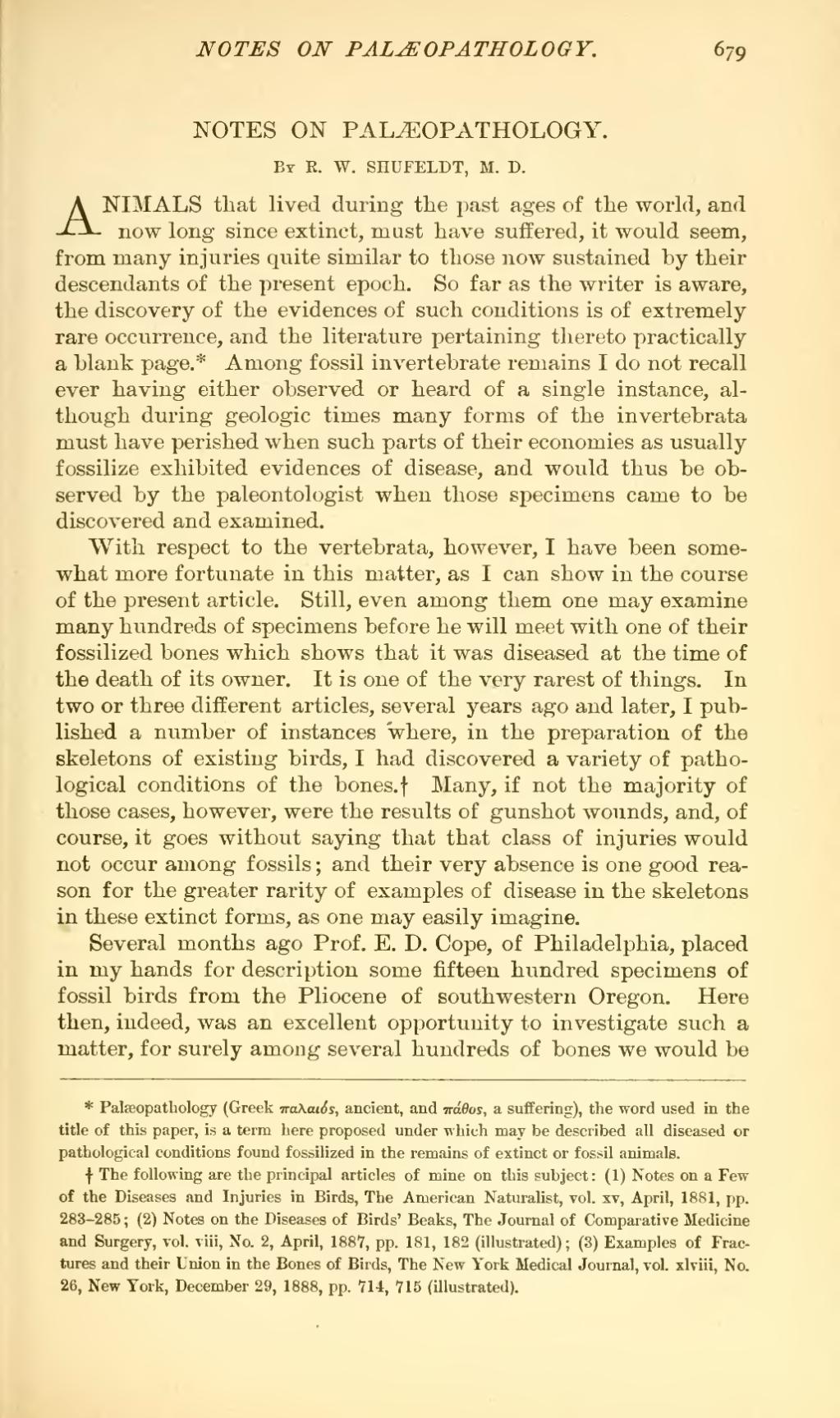| NOTES ON PALÆOPATHOLOGY. |
By R. W. SHUFELDT, M. D.
ANIMALS that lived during the past ages of the world, and now long since extinct, must have suffered, it would seem, from many injuries quite similar to those now sustained by their descendants of the present epoch. So far as the writer is aware, the discovery of the evidences of such conditions is of extremely rare occurrence, and the literature pertaining thereto practically a blank page.[1] Among fossil invertebrate remains I do not recall ever having either observed or heard of a single instance, although during geologic times many forms of the invertebrata must have perished when such parts of their economies as usually fossilize exhibited evidences of disease, and would thus be observed by the paleontologist when those specimens came to be discovered and examined.
With respect to the vertebrata, however, I have been somewhat more fortunate in this matter, as I can show in the course of the present article. Still, even among them one may examine many hundreds of specimens before he will meet with one of their fossilized bones which shows that it was diseased at the time of the death of its owner. It is one of the very rarest of things. In two or three different articles, several years ago and later, I published a number of instances where, in the preparation of the skeletons of existing birds, I had discovered a variety of pathological conditions of the bones.[2] Many, if not the majority of those cases, however, were the results of gunshot wounds, and, of course, it goes without saying that that class of injuries would not occur among fossils; and their very absence is one good reason for the greater rarity of examples of disease in the skeletons in these extinct forms, as one may easily imagine.
Several months ago Prof. E. D. Cope, of Philadelphia, placed in my hands for description some fifteen hundred specimens of fossil birds from the Pliocene of southwestern Oregon. Here then, indeed, was an excellent opportunity to investigate such a matter, for surely among several hundreds of bones we would be
- ↑ Palæopathology (Greek παλαιόσ, ancient, and πάθοσ, a suffering), the word used in the title of this paper, is a term here proposed under which may be described all diseased or pathological conditions found fossilized in the remains of extinct or fossil animals.
- ↑ The following are the principal articles of mine on this subject: (1) Notes on a Few of the Diseases and Injuries in Birds, The American Naturalist, vol. xv, April, 1881, pp. 283-285; (2) Notes on the Diseases of Birds' Beaks, The Journal of Comparative Medicine and Surgery, vol. viii, No. 2, April, 1887, pp. 181, 182 (illustrated); (3) Examples of Fractures and their Union in the Bones of Birds, The New York Medical Journal, vol. xlviii, No. 26, New York, December 29, 1888, pp. 714, 715 (illustrated).
